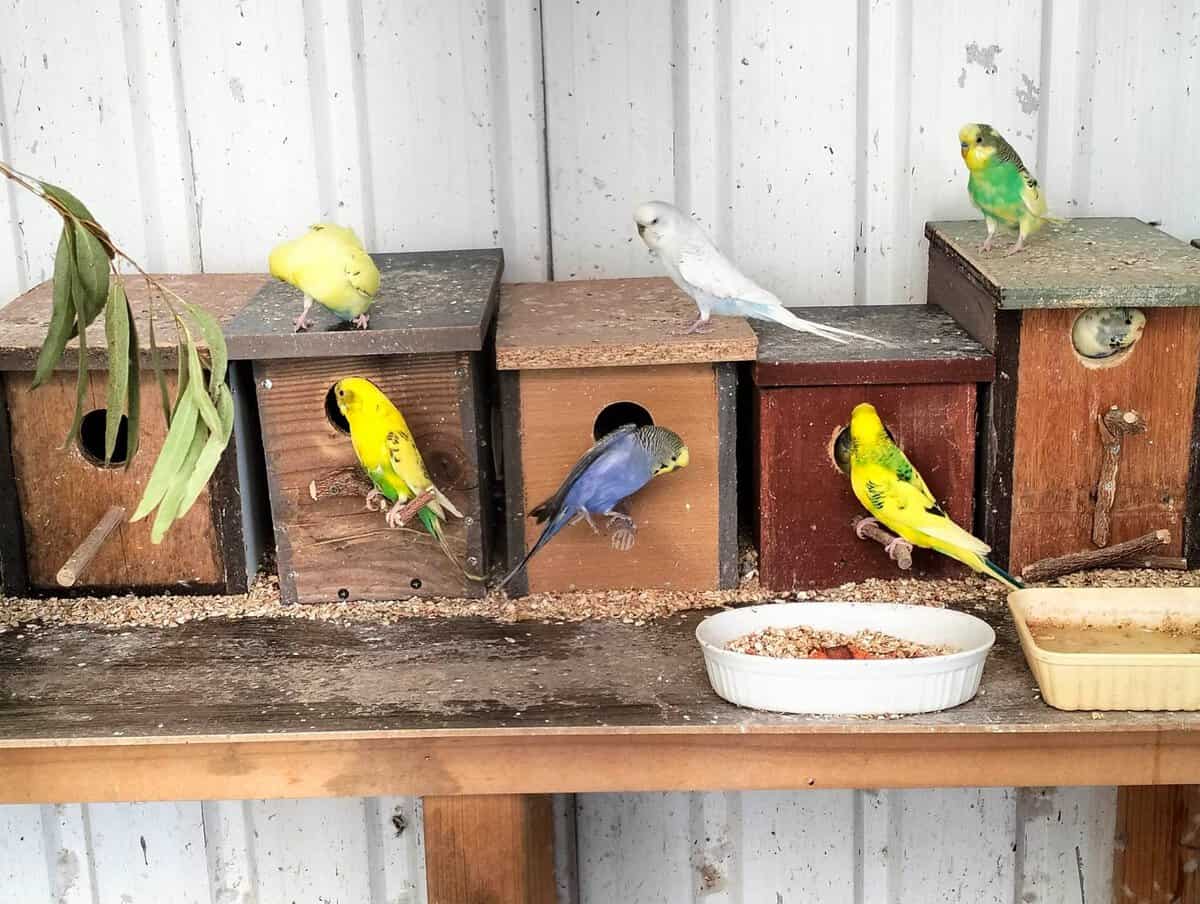Welcoming to the Budgerigar Council of South Australia’s guide to pet budgies, also known as budgerigars or parakeets. Pet owners across the globe appreciate these small, playful buds. Ranking just behind the ever-popular dogs and cats and budgies, budgies have earned their name as affectionate and intelligent. They are also very talkative.
It’s crucial to understand their temperament and needs before you bring them into your home. This guide will provide you with all of the information needed for a pleasant well-balanced life for you and your pet friend.

A Social Butterfly with a Tiny Body
Budgies are social animals that thrive on companionship. In nature, budgies reside in large groups that are constantly chirping, interacted with one another. Although a single budgie may connect with its human owner, especially in the case of lots of love and affection, they should always be accompanied by a feathered pet. If you’re unable to manage two birds, you can devote time to the one bird to prevent loneliness.
Chatterboxes with a Flair for mimicry
The ability of a pet budgie to mimic sounds is among of its most adorable traits. Budgies are able to learn words and phrases through perseverance and practice. This is a great aspect of entertainment to the whistles, chirps and squeaks produced. It is possible that their vocabulary could differ widely. Some budgies might turn into true chatterboxes while others will settle for simple whistles. Their playful voices will put joy to your face, regardless of how good they are at speaking.
A Rainbow on Wings
Budgie bird come in a dazzling array of colors, ranging from the classic yellow and blue light to vibrant shades of violet, green, and white. Breeders have cultivated a variety of variations throughout the years, so you’re bound to find a feathered companion that is a perfect match for your character. Color variation can be a sign of the sex and age of birds as well, making them an excellent topic for conversation.
The feeling of having a huge space in tiny space
While budgies can be tiny creatures, they have plenty of room to fly, explore, and climb. Minimum cage size is 20 inches long and 12 inches deep and 18 inches high. The bigger the better! Provide perches of varying heights and textures to keep your pet entertained, and rotate their toys regularly to avoid boredom. Natural sunlight is beneficial however, make sure that the cage is not placed in the direct light for long periods of time.
A Budgie-approved Diet
A balanced budgie diet is based upon a pelleted food of premium quality, specifically designed for smaller parrots. They’ll get the nourishment they require to grow. Add to their pellet diet fresh fruits and vegetables, such as chopped leaves, arugula, and apples (be certain to take out the seeds). The cuttlebone keeps their beaks trimmed and provide important minerals. Ensure that they have the freshest, clean water.
Making a Connection with your Feathered friend
To master your bird requires patience and a soft touch. Slowly approach the cage, and gently talk to your bird. It is possible to build confidence by offering millet or other treats through the cage bars. Once your pet feels at ease in your presence, you can attempt to step inside the cage and let them rest on your fingers. Be patient, but not overly aggressive. The process can be weeks or even days.
A Lifelong Engagement
Based on the way they are treated, budgies are able to be able to live between 10 and 12 years. Take a look at your life style and commitment to the long term before bringing one into your home. Do you provide them with daily interaction as well as a healthy, clean environment? A budgie can be a delightful pet that can enrich your life. It can bring you delight with its cheerful chirps as well as playful actions. Click here for Budgie Bird
The Budgerigar Council of South Australia promotes responsible pet ownership. Consult an avian vet for guidance if there are any doubts or questions about the care and maintenance of your bird’s friend.
